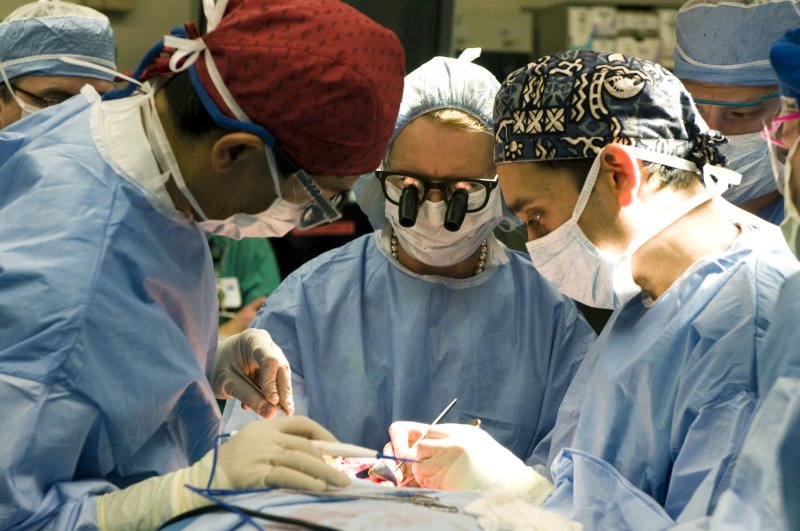A team of surgeons performed the first uterus transplant in the United States earlier this week, the Cleveland Clinic announced. Uterus transplants have already been performed in Sweden and Turkey. (UPI Photo/Cleveland Clinici/Handout) |
License Photo
CLEVELAND, Feb. 25 (UPI) -- The first uterus transplant in the United States was performed this week, the Cleveland Clinic said.
A nine-hour operation on Wednesday transplanted a deceased donor's uterus into the body of a 26-year-old woman, who was not indentified.
The transplant was the first in a study on uterine factor infertility, a condition that prevents some women from having successful pregnancies due to fibroids, genetic malformations, under development or scarring in the uterus
Dr. Tommaso Falcone, an obstetrician-gynecologist and Cleveland Clinic Women's Health Institute chairman said when the study began last fall that women with UFI need another option.
"Although adoption and surrogacy provide opportunities for parenthood, both pose logistical challenges and may not be acceptable due to personal, cultural or legal reasons," Falcone said.
Uterus transplants have previously been done in Turkey and nine in Sweden -- resulting in four births -- but Wednesday's operation was the first in the United States, the Cleveland Clinic said.
But uterus transplants come with many difficulties and are fraught with medical risks. The transplant is only to enable the women to carry one or two pregnancies.
First, a woman must have her eggs removed and frozen. Then, like all transplant patients, must remain on immune system-suppressing medication for as long as the uterus is in her body, to avoid organ rejection.
She will also have to undergo monthly biopsies and wait at least a year before trying to become pregnant, allowing the body to heal and medication to be adjusted correctly.
Fertilization must be done in vitro.
The child will have to be delivered by Caesarian section and then, or after the delivery of a second child, the uterus would then be removed so that anti-rejection drugs can be stopped.
The clinic has given permission to perform up to 10 transplants as part of the study and will then decide the it's effectiveness and safety. As many as 50,000 women are being screened as potential transplant candidates.















